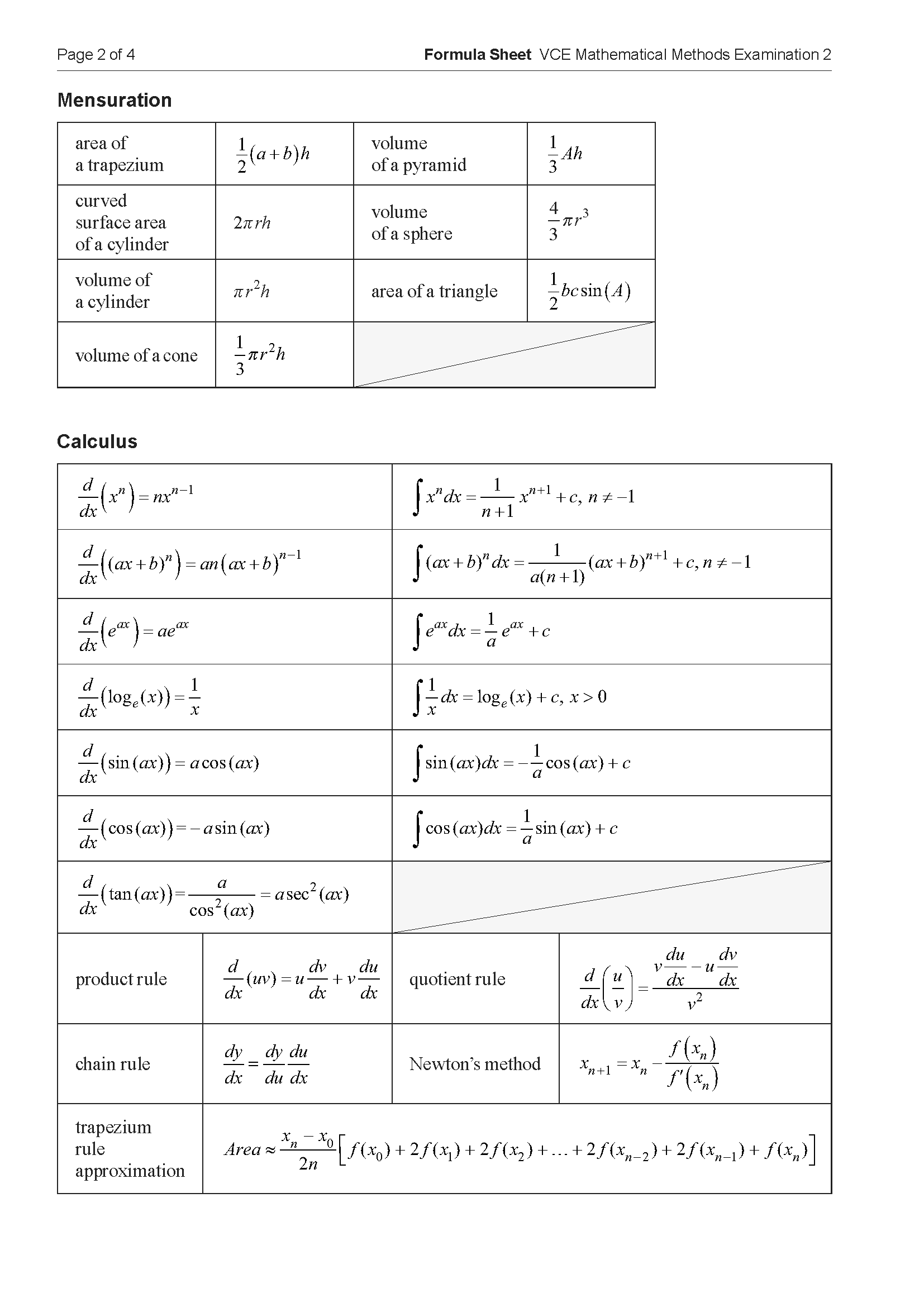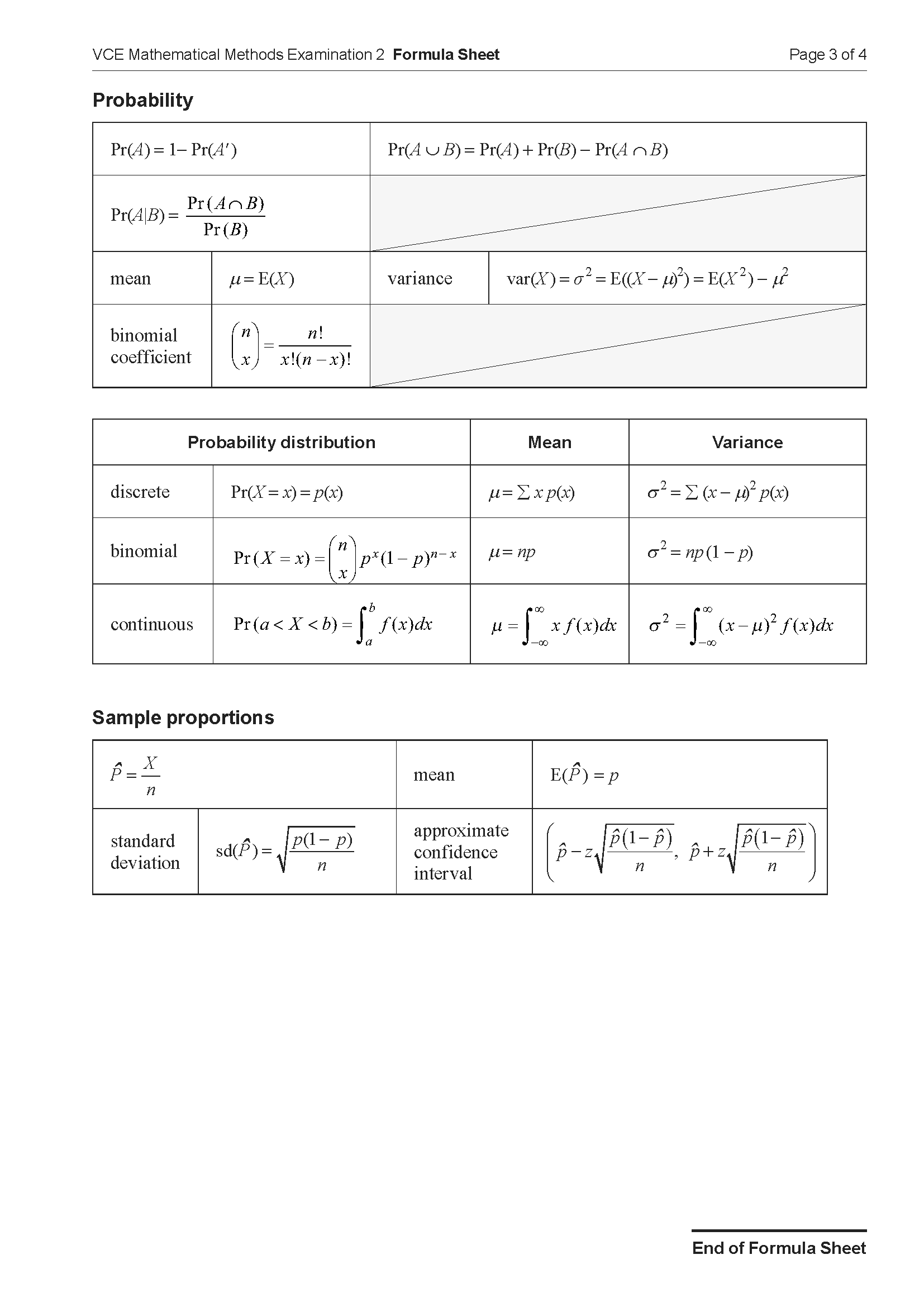VCE Methods Integral Calculus Application Task 21
Number of marks: 10
Reading time: 2 minutes
Writing time: 15 minutes
Section B – Calculator Allowed
Instructions
• Answer all questions in the spaces provided.
• Write your responses in English.
• In questions where a numerical answer is required, an exact value must be given unless otherwise specified.
• In questions where more than one mark is available, appropriate working must be shown.
• Unless otherwise indicated, the diagrams in this book are not drawn to scale.
Part of the graph of \(f: \mathbb{R} \rightarrow \mathbb{R}, f(x) = \sin(\frac{x}{2}) + \cos(2x)\) is shown below.

a. State the period of \(f\). 1 mark
b. State the minimum value of \(f\), correct to three decimal places. 1 mark
c. Find the smallest positive value of \(h\) for which \(f(h - x) = f(x)\). 1 mark
Consider the set of functions of the form \(g_a: \mathbb{R} \rightarrow \mathbb{R}, g_a(x) = \sin(\frac{x}{a}) + \cos(ax)\), where \(a\) is a positive integer.
d. State the value of \(a\) such that \(g_a(x) = f(x)\) for all \(x\). 1 mark
e.
i. Find an antiderivative of \(g_a\) in terms of \(a\). 1 mark
ii. Use a definite integral to show that the area bounded by \(g_a\) and the x-axis over the interval \([0, 2a\pi]\) is equal above and below the x-axis for all values of \(a\). 3 marks
f. Explain why the maximum value of \(g_a\) cannot be greater than 2 for all values of \(a\) and why the minimum value of \(g_a\) cannot be less than –2 for all values of \(a\). 1 mark
g. Find the greatest possible minimum value of \(g_a\). 1 mark
End of examination questions
VCE is a registered trademark of the VCAA. The VCAA does not endorse or make any warranties regarding this study resource. Past VCE exams and related content can be accessed directly at www.vcaa.vic.edu.au

